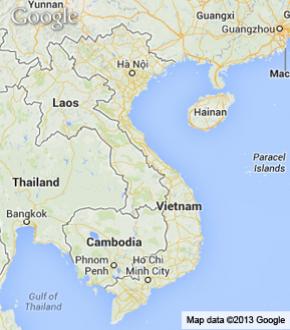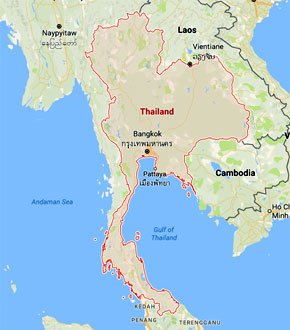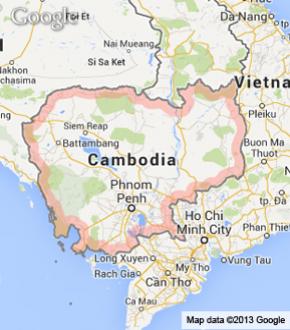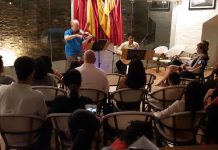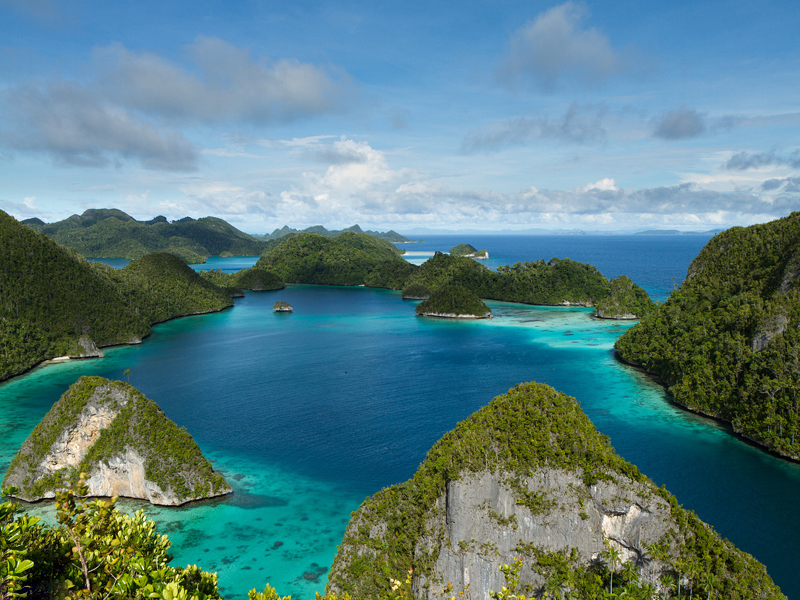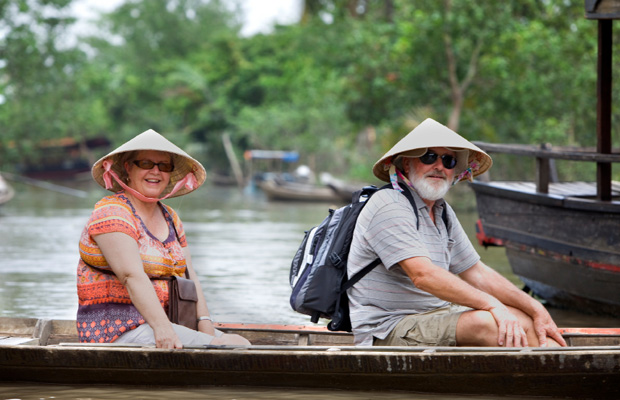I’ve been to Vung Tau many times, but I’ve never been to Mieu Ba temple, the small Buddhist temple on Hon Ba island located in the shadow of the Christ of Vung Tau’s left arm which stands on the headland at the top of Mount Nho (officially the third largest statue of Christ in the world, ahead of Christ the Redeemer). I guess mostly I’ve been too busy enjoying the beach, the seafood restaurants or my favourite Russian bar. But this trip, I was determined to visit the temple.
It was raining heavily when I visited Vung Tau this time, and I’d checked the tide timetable and seen that low tide, which is the only time you can cross to the island, was at around 5pm, which was also when it was likely to be raining, especially based on my wet trip to the coastal city the previous day.
Come late that afternoon the rain had reduced to a light sprinkling and I decided it was time to exit the hotel and finally make the trip. My girlfriend refused to come along, insisting that it was bad luck for a couple to attend a temple and pray together as it would cause them to break up, but really I think she just didn’t want to go out in the rain. I vowed to get her one of the beautiful shells from the beach that tourists often collect to remember their trip.
I rode down to the back beach which was still well populated with locals swimming and fixing fishing nets, although even mid-week and in the rain, it was quieter than it sometimes was. I parked my bike and walked out onto the almost chilly overcast beach. It was an hour before low tide but the rocky path out to the island was out of the water far enough that at least a few other people were braving the hundred meter trip across slippery rocks to the island.
I was lucky enough to be wearing some cheap rubber soled skate shoes that had already been underwater the day before in the heavy rain on the trip down. They provided a reasonable amount of grip on the slippery rocks but it was still very treacherous. Local Vietnamese were out hunting oysters on the rocks and I wisely chose to step on all the rocks that had the remnants of empty oysters on them because it provided more purchase.
It wasn’t a difficult trip but I wouldn’t recommend it for anyone who’s not used to a little bit of rockwalking or who is afraid to get wet and possibly hurt if they fall. Despite my great experience with this sort of task as a child I found it challenging but I managed to stay dry, un-hurt and I didn’t drop my phone.
On reaching the island I couldn’t help but notice the stone bunkers, just like on the headland. There was a large one at the front of the island, empty and full of trash. The people who maintained the island apparently chose not to dirty their hands with the tools of war, maintaining only the temple itself which was just big enough for a room of worship and a small kitchen on the side.
Mieu Ba temple was built in 1781 to honour the Water Dragon Holy Lady, and from the island, the long dragon which wraps around the side of the headland is clearly visible. Tradition states that due to its remote location, the temple can grant wishes for those people brave enough to travel to it and pray. I was too reluctant to enter the main shrine or ask for incense since I was taking photographs but I stood in front of some of the smaller shrines outside the main temple after the two girls who had arrived at the island earlier had finished praying and pondered the significance of the beautiful secluded island location and offered a thoughtful prayer and a wish to the dragon goddess.
I walked all the way around the temple, behind which was just a tiny sandy path at the edge of the cliff with the waves of the East Sea crashing onto the rocks far below. After exploring all parts of the tiny island I headed back to the top of the stairs to take some panorama photographs of the entire Vung Tau from the statue of Christ around the beach and back to the island.
It truly felt like the edge of nowhere and the freshly flowering frangipanni just after the rain provided a beautiful addition to my photographs of the distant beach and city. At the top of the island is a Vong Phu style rock which means that the lady Phi Yen (Nguyen Thi Ram) was waiting for her lover. Her sad love story may be be known among Vietnamese scholars but sadly I could not find any more information on it to complete my understanding of the Water Dragon Lady’s temple.
Uplifted and a little bit enlightened from my trip to the temple I spent the rest of my time in Vung Tau capturing the amazing sunrises on the back beach and the beautiful sunsets on the front beach. I was proud to have finally made the trek out to the temple this time. It’s a beautiful outing and anyone who says that Vung Tau is second choice to Nha Trang surely hasn’t seen the peaceful beauty of it’s non-commercial temples and relaxed ways of life. Vung Tau is always my favourite place to visit, and this trip confirmed it yet again.


